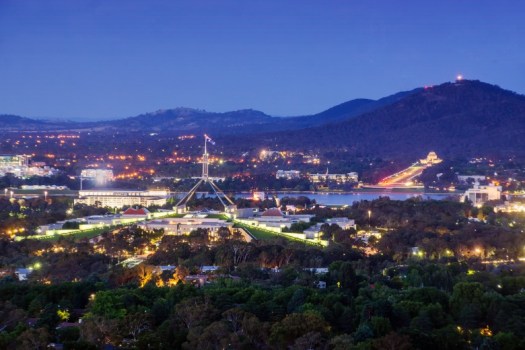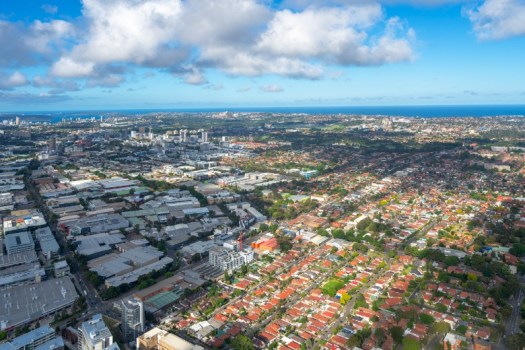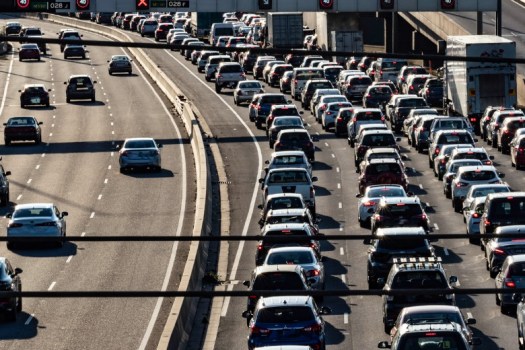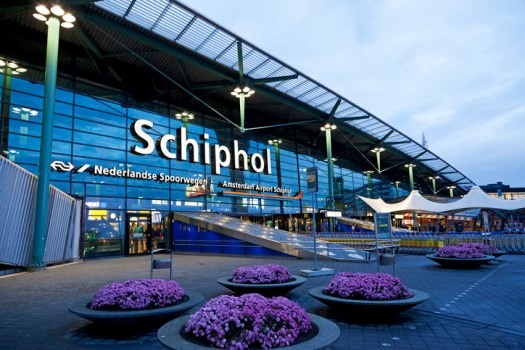
The best cities in the world combine foresight and planning with serendipity and the ability to optimise recurring waves of development, according to global cities expert James Moore.

Moore has 35 years of professional experience working with clients around the world on complex urban regeneration projects and optimising the benefits of urbanisation while minimising the downsides.
As well as working with leading consultancies, he’s held the roles of Associate Professor and Dean at the University of South Florida’s School of Architecture and Community Design, lecturer at the University of Pennsylvania and Massachusetts Institute of Technology, and Chair of the Urban Revitalization Council at Washington DC’s Urban Land Institute.
He was recently in Australia in his role as Global Managing Director at Hatch Urban Solutions, where he took time out to chat with Government News about cities, urban density, and what he thinks of Sydney’s planned Aerotropolis.
GN: What are the characteristics of a well-planned, functional city and how do Australian cities stack up against their overseas counterparts?
JM: This is a very interesting question. Some of the most highly ‘planned’ cities of recent times – Brasilia, Chandigarh, even Canberra – are often seen as less interesting, less vital, less lively than older, more ‘organic’ cities that grew spontaneously over time – NYC and London, for example.
Clearly, any city of any reasonable size is the product of significant planning and design, but the very best world cities seem to combine foresight and planning with serendipity and an ability to optimise recurring waves of growth and development.

The social foundations of a city are its neighbourhoods. In this respect, Sydney, Melbourne, Brisbane and Perth all seem to be doing well, particularly with respect to the older neighbourhoods, which often developed along historic streetcar or rail lines and have a very strong organisation and identity and a granular mix of uses.
These are the characteristics that seem perpetually desirable, which is why many of the older neighbourhoods command top dollar.
Many contemporary developments seek to match these traditional characteristics, but the level of nuance, detail and local sensitivity needed, and the time required for maturation are often at odds with the methods and focus of current development practices.
How is Australia doing in terms of city planning and where can we do better?
The major cities in Australia generally have very good rail infrastructure and seem to be doing a good job of continually maintaining and upgrading all types of infrastructure as growth occurs. These are essential, albeit not particularly sexy, elements of city building, and cities often make the mistake of minimising or deferring maintenance until conditions are dire.
Australian cities seem to have also done a pretty good job of maintaining, preserving, and enhancing older, pre-car neighbourhoods, many of which are relatively close to city centres and are increasingly desirable places to live. But because they are desirable, they’ve also become relatively expensive, limiting the number of people who can afford to live in them and pushing others to look for options further away from the city centre.

Like many global cities, Australia’s urban centres suffer from the problems of urban sprawl, resulting from and exacerbated by an undue focus on the private car as a primary form of mobility. The spatial demands of car-based developments are simply at odds with the character, scale and grain of older, pedestrian-based neighbourhoods and communities.
Ideally, the major Australian cities will double-down on their investments in rail infrastructure, supporting this with strong programs for multi-modal transit-oriented neighbourhoods that provide regional connectivity and a strong sense of local character and accessibility, while beginning to address the pent-up demand for in-town housing.
A recent Productivity Commission report recommended increasing housing density in and around the CBD to address housing affordability. What’s your take on this approach?
The Productivity Commission’s report builds on a long line of research that explores the relationship between density of development and the costs of infrastructure going back at least until 1974.
In general, the greater the density, intensity and integration of development, the more efficient the provision of infrastructure.
The transition in the early- and mid-20th century to a car-dominated form of mobility changed all the paradigms. If you optimise for cars, you produce low-density, dispersed communities with relatively high per capita infrastructure costs.
If you optimise for people, using regional rail systems to organise development and local neighbourhood strategies oriented around walking and cycling, you can get the best of both worlds – relatively high, yet quite liveable, densities – and organised regional growth.
The challenge of trying to increase densities in a car-dominated (or even car-dependent) system is the more density automatically generates more traffic and more congestion and people vehemently do not want that.

More density in a rail and active transport system can actually help generate more vitality, more economic activity, more street life, and more urbanity. People generally prefer these attributes but have grow conditioned to associate density with vehicle traffic congestion.
One of the challenges is that hybrid approaches don’t work. You have to choose one approach or the other. Cars simply eat up too much land area, both while stored and while in use, to broadly facilitate the types of activity and vitality that many people say they like and want, and that help optimise infrastructure investments.
The ultimate challenge isn’t technical. We know how to design neighbourhoods and districts that are high-density, infrastructure efficient and quite liveable. The challenges are political and manifest as an inability or unwillingness to strictly limit the impacts of private cars and to optimise the community benefits of transit, active transport and placemaking.
How do we get urban density right?
Start by focusing more on physical and functional characteristics – curating the right mix of uses, optimising access to these uses, integrating nature and the built environment, creating a distinctive sense of place – than on abstractions such as dwelling units per hectare or floor coverage ratios.
Nobody knows if their neighbourhood is 100 or 120 units per hectare. But they do know that it has mid-rise units, walkable streets with lots of trees, a wide variety of nearby uses, etc.
All of this is made much easier if we don’t have to focus so much on cars. A desirable condition of good urban density is that people can live in a neighbourhood without needing to use a personal vehicle. This helps modify the costs of living for the residents and reduces the costs of construction for developers. It also reduces the need to give space over to cars, both in terms of street widths and in the provision of parking.
The space that is saved in the public realm can go to providing additional amenities – landscaping, street furniture, recreation facilities, pocket parks – all of which make living in the neighbourhood more desirable.
The NSW government is selling the planned Western Sydney Aerotropolis as a thriving economic centre and a high-skill jobs hub. What are your general thoughts on the concept of the ‘airport city’?
Historically, cities were built around ports which served as the locus of mobility for both people and goods and became the centres of economic activity and the major gateways to their communities, and often defined a city’s character. In the 19th and early 20th centuries, ports were joined by railway stations as key urban elements, and which served a similar purpose.

Today, airports are also part of this mix. In many places, the airport is the first impression a visitor gets of the city. Airports, today, are hubs of economic and operational activity, and they have an ecosystem of uses that naturally want to be in proximity to them. It makes sense to take all these factors and issues into consideration from the outset, even as a community is thinking about a new airport, rather than to simply let them happen haphazardly.
Which primary uses need or want immediate proximity to terminals and other on-site facilities? Which secondary uses want or need access to these primary uses? What is the ideal physical or functional relationship?
Which uses should be hidden away from the general populace and which should be front and centre? How do you create easy regional access to the airport proper, to the dense, mixed-use “airport city” that typically emerges adjacent to the terminal facilities, and the other mix of uses that comprise the broader aerotropolis?
Do you have any specific views on the proposed Western Sydney Aerotropolis?
I believe that the original decision to locate the new airport in Badgerys Creek was made without a great deal of thought as to the broader economic and functional potentials, but a great deal of thought has gone into these issues in recent years.
With any undertaking of such size, it will take decades before a critical mass of development will be reached and one can examine the full range of positives and/or negatives.
Given the desire for a new airport, and the need to accommodate an increasing population, approaching the broader region as an Aerotropolis seems to be the correct way to address these challenges.
Are there places overseas where an aerotropolis is working?
Increasingly, airports are incorporating a wide range of uses that are not directly linked to air travel – these include conference centres, hospitality, retail, restaurants, and even entertainment uses.
Sometimes, these occur ‘inside the fence’ and are controlled as part of the airport master plan. Other times, these functions occur ‘outside the fence’ and their plans and designs are controlled by the surrounding jurisdictions.

Public transport is essential to the functioning of the airport, the airport city and the broader aerotropolis. Ironically, the more accessible an airport and its related functions becomes, the lower the potential for revenue generation as many airports make significant sums of money from parking private vehicles.
However, land and money that might have been given over to parking – both in surface lots and in structures- can be used for other potential amenities and/or revenue streams including those that will be attractive to non-airport users. These can include retail, hospitality, restaurants, conference facilities, commercial office, logistics, labs, etc.
Munich Airport integrates a shopping mall and ancillary recreation and entertainment functions, all of which are accessed by regional transport.
Schiphol Airport in Amsterdam includes a wide range of commercial functions both on-site and adjacent and is directly connected to the city centre and innovation districts by rail.
Denver International Airport is the largest in the world by size (33,000 acres) and includes an impressive arrange of emerging and planned future functions, all linked back to the rest of the city by a regional light-rail system.
Comment below to have your say on this story.
If you have a news story or tip-off, get in touch at editorial@governmentnews.com.au.
Sign up to the Government News newsletter